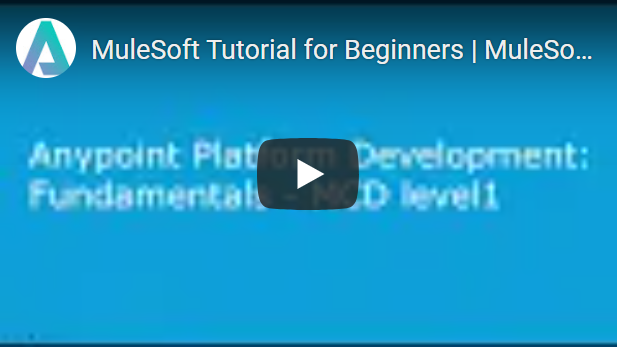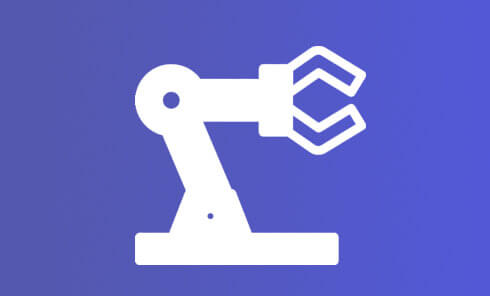• Live Classes
Many organizations like Capgemini, IBM, introv, incepta, HCL, Hexaware and some more companies partenered with MuleSoft. In 2018, MuleSoft was acquired by Salesforce essentially to accelerate customers’ advanced data. So let get started with Mulesoft training now.
7.8k Satiesfied Learners 5.0 out of 5.0 stars Read Reviews
Why Mulesoft is the Best Career Move?
Hence, Mulesoft offers a good career path to enthusiastic developers.
Training Options
Free Beginner Module
- Premium video access
- Self-assessment
- Free study materials
- Course Designed by experts
- Training on Updated Version
Self-Paced Learning
- 20 hours of Premium-quality materials
- Self-learning content
- Course Designed by experts
- Real Time Case Studies
- Training on Updated Version
Instructor-Led Training
- 20 hours of Premium-quality materials
- Self-learning content
- Course Designed by experts
- Real Time Case Studies
- Training on Updated Version
Mulesoft Course Key Features
Skills Covered
Mulesoft Training Online
Eligibility
This Mulesoft Certification is for candidates from SAP background, Mainframe background, Testing background and BPO background.
Anyone interested to switch their career to RPA developer role.
Pre-requisites
Having basic knowledge of Java is good but not mandatory. Anyone can learn this course as there are no pre requisites as such.
Course Content
Mule ESB Introduction
◙ Problems of Point to Point Integration
◙ What is an ESB?
◙ How an ESB helps in solving problems with P2P Integration
◙ Ideabehind an ESB. How it works?
◙ What is Orchestration?
◙ What is Mule?
◙ What is Any-point Platform for Mule?
Mule Basics
◙ WHat is a mule FLow? WHat is Event Processor?
◙ How a Mule Event does looks like?
◙ What is a Transformer, Endpoint?
◙ Introduction to Any-Point Studio
◙ DEscribe the structure of new Mule 4 projects and ddeply-able archives
◙ Debugging a mule flow
Java Module
◙ Understanding modules in Mule.
◙ Call static and non static Java methods using the new Java module.
Standalone Mule Server and Runtime Manager
◙ Starting Stand alone mule Server.
◙ Understanding various configurations in Standalone Server
◙ Deploying applications manually to standalone server
◙ Registering a standalone server in Any-point Run-time Manager
◙ Deploying Application to standalone server using Run-time Manager
Consuming Webservices- REST & SOAP
◙ Consuming a Restful Web-service
◙ Passing arguments to Restful Web-service
◙ Consuming Restful Web-service
◙ Consuming SOAP Web-service Using Web-service Consumer
File Endpoint
◙ Configuring file connector
◙ Trigger a flow when a new file is added to a directory
◙ Writing a file to file system
◙ Reading and writing files
Database Endpoint and externalization of properties
◙ Configuring Database Connector
◙ Configuring the Database Select operation
◙ Externalizing configuration to yami file
◙ Migrating between environments
◙ Add secure properties to Mule4 applications
Water- Marking and Object Stores
◙ Trigger a flow when a new record is added to a file and use automatic Watermarking
◙ What are Object Stores?
Domains
◙ Understanding about Mule Domains
◙ Sharing Global configurations across multiple projects using domains
◙ Create Mule 4 domains using Maven co-ordinates and use them to inherit all dependencies
◙ Creating and using Mule domains
Routing concepts
◙ Scatter-Gather router
◙ Choice Router
◙ Implementing Scatter-Gather router
Transformers - 1
◙ Introduction to Data Weave data transformation Language
◙ Writing Data-weave expressions
◙ Adding Samle data to view
◙ Previewing transformations in studio
◙ Externalizing Data weave expressionsinto DWL file
◙ Writing Expressions for XML, JSON and JAVA
◙ Writing Expressions for transforming XML to JSON and vice-versa
◙ Using Message Variables in DWL
◙ Properties in Transform Message transformer
Transformers - 2
◙ Transforming complex data structure using DWL
◙ Working with collections in DWLusing map operator using $
◙ Using Various Data-weave Operators
◙ Custom Data-Types in DWL
◙ Formatting in DWL
◙ Conditional Logic Operators in DWL
Handling Errors
◙ What happens when exception happen in a flow?
◙ How to handle System Exceptions?
◙ Difference between Mule 4 on Error Continue nd on Error Propaget Scopes
◙ Handling Errors at application level
◙ Handle specific types of errors
◙ Handle errors at the flow level
◙ Handle errors at the processor level using try scope
◙ Map an error to a custom error type
MUNIT
◙ Testing of Mule flows using MUNIT
◙ Generating MUNIT flows from existing flows
◙ Writing various asserts, behaviours and validations
API- Led connectivity
◙ Understanding about different layers
◙ Experience layer, Process layer, system layer
Designing APIs
◙ Use API designer to define an API with RAML
◙ Use the mocking service to test an API
◙ Add request and response details
◙ Add an API to AnyPoint Exchange and share an API
Managing APIs
◙ Deploy an application to CloudHub
◙ Create and deploy an API proxy
◙ Restrict API access with policies and SLAs
◙ Request and grant access to managed API
◙ Add client ID enforcement to an API specification
CloudHub deployment
◙ Understanding how to deploy on cloud-Hub
◙ What are changes to be done while deploying from on-premisis to cloud.
Connect with Course Counsellor
Mulesoft Course Certification
Asha24’s Mulesoft Certificate Holders work at companies like
Training Features
Instructor-led Sessions
Real-life Case Studies
Instructor-led Sessions
MuleSoft Training Course Description
What are the prerequisites for this course?
But having experience in any one of the Object-oriented languages will help you in better performing on the course.
Overview of MuleSoft
Mulesoft ESB is an integration platform. Which is easy to compose, prepare, and execute APIs. A huge number of companies use MuleSoft to create their application networks on both cloud-based and on-premise tools.
Mulesoft engine runs its applications and carries domains and systems.
Mulesoft performs an easy way to unify the program to achieve a unique output of the client, automate marketing methods, and grow related experiences.
What is MuleSoft
Mulesoft is the Platform, which is a Java-based Enterprise Service Bus (ESB) that enables users to combine applications promptly and easily, by allowing them to exchange services.
It also permits an easy combination of existing operations, irrespective of the several techniques that are used like, JDBC, JMS, HTTP Web Services, and more.
The Mulesoft ESB can be used everywhere, as it can integrate and execute issues in real-time with unlimited connections.
Advantages of Mulesoft
Mulesoft allows the user to use subsisting components as it doesn’t require a particular code to execute and there is no specific programming is required.
Mulesoft never enforces any production restrictions on the planner, such as WSDL, or XML actions.
Mulesoft dramatically increases its productivity by reducing time to exchange for projects to implement the scalable application with security as required.
An economic assistance corporation produces billions of activities per day with Mulesoft across many servers in a large divided industry.
Capabilities of Mulesoft
Below are some capabilities:
Creating and hosting service: We can present and receive renewable tasks, using the Mulesoft ESB as a service application.
Service agreement: The main assistance from report setups and rules differentiate custom logic from texting and permit individual service calls.
Message routing: It includes select, separating, route, and re-arrange reports based on data provided.
Data conversion: It restores data across modifying forms.
Components and Services of Mulesoft
API Designer is a web-based tool that a user can utilize to create and execute an API, and the designed API can be transferred with the team members.
API Manager is an interface in which a user can control APIs. BY using these elements we can command the access of API.
Connectors of Anypoint are a set of built-in elements that a contractor can work to combine the software with the number of servers.
Maintenance of Anypoint is a control panel that assists a community team to test applications.
Anypoint Observer presents a graphical representation to draft APIs and their dependencies in real-time.
Exchange of data is a universal core that the team can use to store and access APIs, presentations, arrangements, connections, and other sources.
Anypoint Studio is a Java-oriented software that a designer can use to expand APIs to the on-premises domains. Studio also has specialties to plan, compose, declare and rectify data integrations.
Why should you learn Mulesoft
Mulesoft ESB is used to integrate two several systems with security and it is varied that allows performing various types of integrations by presenting graphical representations as output.
Mulesoft is a trending software that will be implemented in many industries in the coming future. This is the reason why the demand will increase more than ever.
Asha24, in this context, provides the best Mulesoft tutorials where they provide excellent training material so that anyone can easily learn Mulesoft and get certified.
Use this opportunity and become proficient in Mulesoft.
Why should you learn Blue Prism?
◙ There is an increase in demand for RPA professional and it is estimated that more than 5 million jobs will be available by 2020 in the automation and robotics industry
◙ Since it is code free, literally anyone can learn Blue Prism without any previous knowledge in coding.
◙ This course can be taken up by Flowchart Engineers, IT Experts, Automation Students, Executive Specialists, Business Professionals, and Fresh Graduates
Blue Prism is the need of the hour software which will be implemented in many organizations in the coming future. This is the reason why its demand will increase more than ever. Asha24, in this context, provides the best RPA tutorials i.e. blue prism tutorials where they provide impeccable blue prism training material so that anyone can learn blue prism and receive blue prism certification.
A successful career is only a click away. Use this opportunity and become proficient in the blue prism.
MuleSoft Training Online & Certification Course FAQ’s
Do Asha24 provide a 100% money-back guarantee?
1. This offers is only on instructor-led training
2. 95% class attendance
3. In the Test, you have to score 95% marks conducted by Asha24
What happens if I'm unable to attend the Asha24 online training session?
When shall I get access to self-paced learning after enrollment?
Do you provide placement assistance?
We do not offer placement.
What is MuleSoft?
List types of variables in MuleSoft
Flow Variable: It is used to either set or removes variables tied to a particular message in the current flow.
Record Variable: It is used for batch processing flows.
Session Variable: This variable is used to either set or remove variables tied to a particular message for the complete lifecycle.
What are the various types of messages in MuleSoft?
Explain Mule ESB
What is fan-in?
What is a fan-out?
Mention the features of Mule ESB
Offer SLA (Service Level Agreement) monitoring and API management facility.
It has easy to use and drag and drop graphical design.
Mule ESB provides high scalability.
It enables developers to deploy in one click cloud or on-premise deployments.
Mention the basic principles of ESB Integration
Transportation: It negotiates between different formats like JDBC, HTTP, JMS, etc.
Transformation: It deals with the transportation of data between data formats needed by the ESP connector.
Non-functional consistency: It is the way of how monitoring and security policies are applied and should be consistent.
Mediation: It involves offering different interfaces to:
Enables different channels to the same component implementation.
Support various service versions for backward compatibility.
What is Mule Expression Language?
What are the advantages of using ESB?
It offers a high level of the operational controlling facility from the portal that is based on the web.
ESB provides numerous connectivity options using SaaS-based applications.
It provides API and analytics management.
ESB is equipped with numerous bug fixing and automated testing facilities.
EDI (Electronic Data Interchange)/B2B (business to business) integration.
Batch integration feature using real-time integration methods.
def
What is the difference between Self-Paced learning and Online Classroom Training?
Whereas
Online Classroom module includes the Live Instructor Interaction Plus Tool along Free Self-Paced materials




